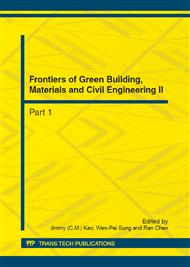p.801
p.805
p.810
p.814
p.822
p.826
p.831
p.839
p.843
Testing and Evaluation of Frictional Lose for Strand with Multi-Curves
Abstract:
How to determinate the pre-stressing losses is a key issue for the pre-stressed concrete structure design and construction. Especially for the major engineering projects, the actual value of pre-stressing loss should be detected in site to check or revise the original design parameters and keep the engineering in safety. Compared with the straight strand, the frictional lose between strand with multi-curves and ducts would occupy the most part of all losses. It is a crucial ingredient to determinate the pre-stressing losses. This paper introduces the detection and evaluation results about frictional loss of a typical pre-stressed concrete invert siphon with multi-curve strands according to Chinese specification. The testing procedure is given and a formula is derived to calculate the frictional lose for the multi-curve strands. Then a simplified method is advised to evaluate the friction coefficient and wobble factor. The results show that the theoretical values recommended in the code fit with the testing deductive values and prove that the given values of friction lose for the design are reasonable as well. The conclusions would serve as a reference for similar engineering structures.
Info:
Periodical:
Pages:
822-825
Citation:
Online since:
August 2012
Authors:
Price:
Сopyright:
© 2012 Trans Tech Publications Ltd. All Rights Reserved
Share:
Citation:


